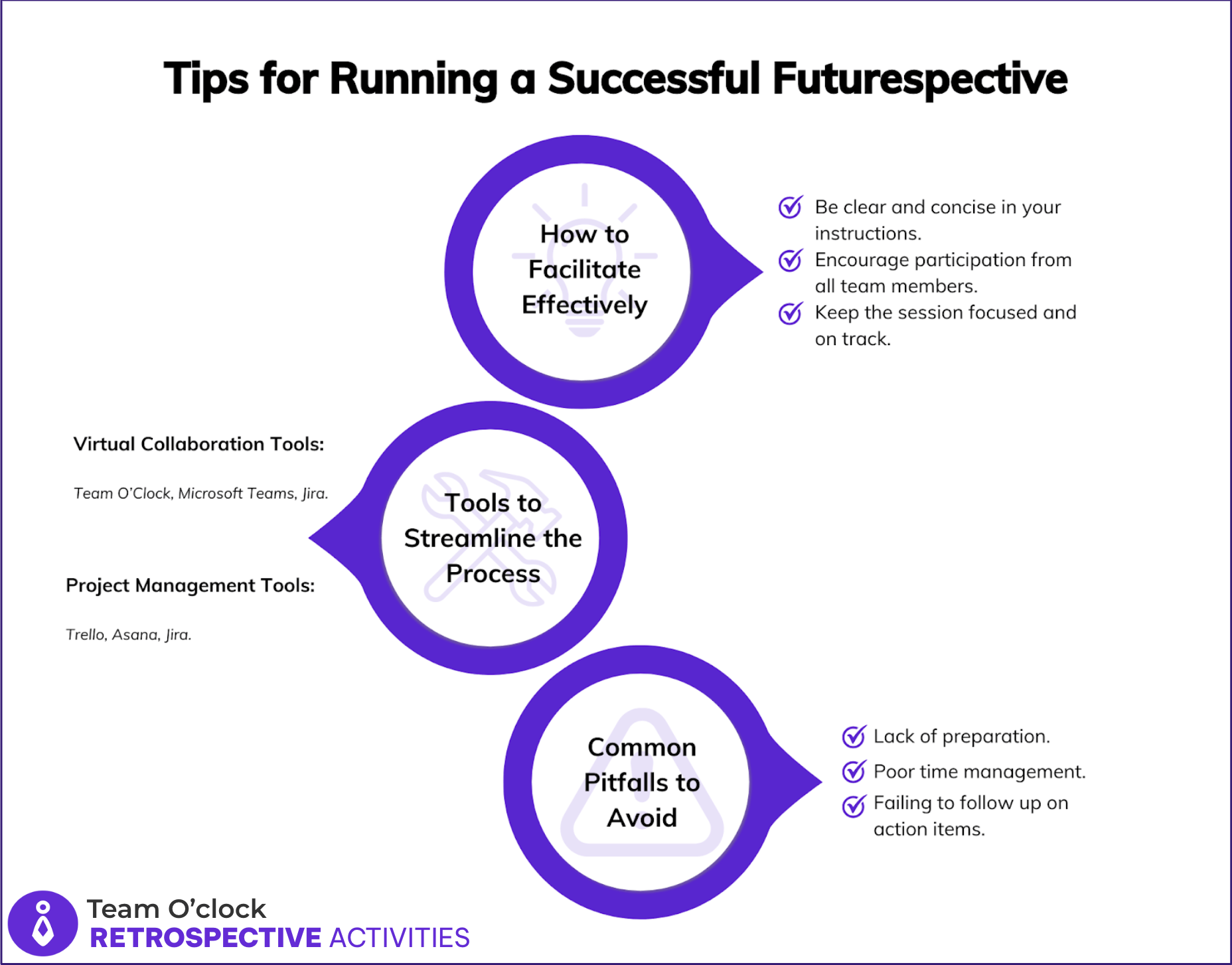
Futurespective: A Complete Guide for Forward-Thinking Agile Teams

Is futurespective the Agile team’s secret weapon for growth in 2025? While retrospectives have long been a staple for reflecting on past performance, forward-thinking teams are now turning to futurespectives to plan, innovate, and prepare for what lies ahead.
But what exactly is a futurespective, and how can it benefit your team? In this comprehensive guide, we’ll explore everything you need to know about futurespectives, from their purpose to practical steps for running one successfully.
What is a Futurespective?
A futurespective is a structured team activity focused on envisioning and planning for the future. Unlike a retrospective, which looks back at past events to identify what went well and what didn’t, a futurespective encourages teams to look forward.
It’s a proactive approach to:
identifying opportunities,
mitigating risks and
creating actionable steps to achieve future goals.
How It Differs from a Retrospective
While retrospectives are about learning from the past, futurespectives are about shaping the future. They shift the team’s mindset from reactive problem-solving to proactive planning. This forward-thinking approach fosters innovation, alignment, and long-term success.
Why Futurespective Is a Powerful Tool for Planning and Innovation
Futurespectives empower teams to:
Anticipate challenges and opportunities.
Align on shared goals and visions.
Foster creativity and collaboration.
Create actionable roadmaps for success.
By focusing on the future, teams can break free from the constraints of past mistakes and embrace a mindset of growth and possibility.
Why Run a Futurespective?
The Benefits of Futurespectives for Agile Teams
Futurespectives offer numerous benefits to agile teams, including:
Improved Strategic Planning: Teams can align on long-term goals and create actionable plans to achieve them.
Enhanced Collaboration: By involving everyone in the planning process, futurespectives foster teamwork and inclusivity.
Risk Mitigation: Identifying potential risks early allows teams to develop strategies to address them.
Increased Innovation: Futurespectives encourage creative thinking and out-of-the-box solutions.
What to Expect from a Futurespective
The Outcomes of a Successful Futurespective
A well-executed futurespective can lead to:
Clear, actionable steps for achieving future goals.
A shared vision and alignment among team members.
Increased motivation and engagement.
Common Futurespective Challenges and How to Overcome Them
While futurespectives are powerful, they can come with challenges, such as:
Lack of Participation: Ensure everyone feels comfortable contributing by creating a safe and open environment.
Vague Outcomes: Use structured techniques to generate actionable insights.
Poor Follow-Through: Assign clear responsibilities and create a roadmap for implementation.
When to Perform a Futurespective
Ideal Scenarios for Running a Futurespective
Futurespectives are particularly useful in the following situations:
Project Kickoffs: Set the tone for success by aligning on goals and expectations.
Strategic Planning: Develop long-term strategies and roadmaps.
Team Alignment: Ensure everyone is on the same page about future priorities.
Signs Your Team Needs a Futurespective
Consider running a futurespective if your team:
Lacks direction or clarity about future goals.
Faces recurring issues that need proactive solutions.
Is preparing for significant changes or challenges.
How to Run a Futurespective: Step-by-Step Guide
Step 1 – Set the Stage
Explain the Purpose: Clearly define the goals of the session.
Create a Safe Environment: Encourage open and honest communication.
Step 2 – Gather Data
Brainstorming Techniques: Use methods like mind mapping or sticky notes to collect ideas.
Tools and Methods: Leverage tools like Slack or Jira for virtual teams.
Step 3 – Generate Insights
Analyze Data: Look for patterns, opportunities, and risks.
Foster Creativity: Use techniques like “Hopes and Concerns” or “Hot Air Balloon” to spark innovative thinking.
Step 4 – Decide on Actions
Prioritize Steps: Focus on the most impactful actions.
Assign Responsibilities: Ensure everyone knows their role in implementation.
Step 5 – Summarize and Close
Recap Takeaways: Highlight key insights and next steps.
Ensure Alignment: Confirm everyone is committed to the plan.

Futurespective FAQs
1. What is the difference between a retrospective and a futurespective?
Retrospectives focus on past events, while futurespectives focus on future planning and goal-setting.
2. How can you run a futurespective for remote or hybrid teams?
Use virtual collaboration tools like Trello or Asana to facilitate the session.
3. What are the best futurespective templates for agile teams?
Popular templates include the Hot Air Balloon, Hero’s Journey, and SWOT analysis.
4. How long should a futurespective session last?
Most sessions last 1-2 hours, depending on team size and complexity.
5. Who should participate in a futurespective?
Include cross-functional team members, stakeholders, and project leads.
6. What are the most common mistakes to avoid during a futurespective?
Avoid lack of preparation, poor facilitation, and failure to follow up on action items.
7. How do you ensure actionable outcomes from a futurespective?
Prioritize ideas, assign responsibilities, and create a clear roadmap.
8. Can futurespectives be used for personal goal-setting or individual planning?
Yes, the concept can be adapted for personal development or career planning.
9. What are some creative futurespective techniques for engaging teams?
Try methods like the Sailboat, 4Ls Pre-Mortem, or Hopes and Concerns.
10. How often should you run a futurespective?
Run them quarterly, at project kickoffs, or during significant transitions.
Try Team O’Clock’s Futurespective Today
Ready to take your team’s planning and innovation to the next level? A futurespective is the tool you need to align your team, anticipate challenges, and create actionable steps for success. Whether kicking off a new project or preparing for the future, a futurespective can help you achieve your goals.
Sign up today at teamoclock.com and explore Agile solutions and fresh ideas to make your meetings fun and productive with a 15-day free trial.








